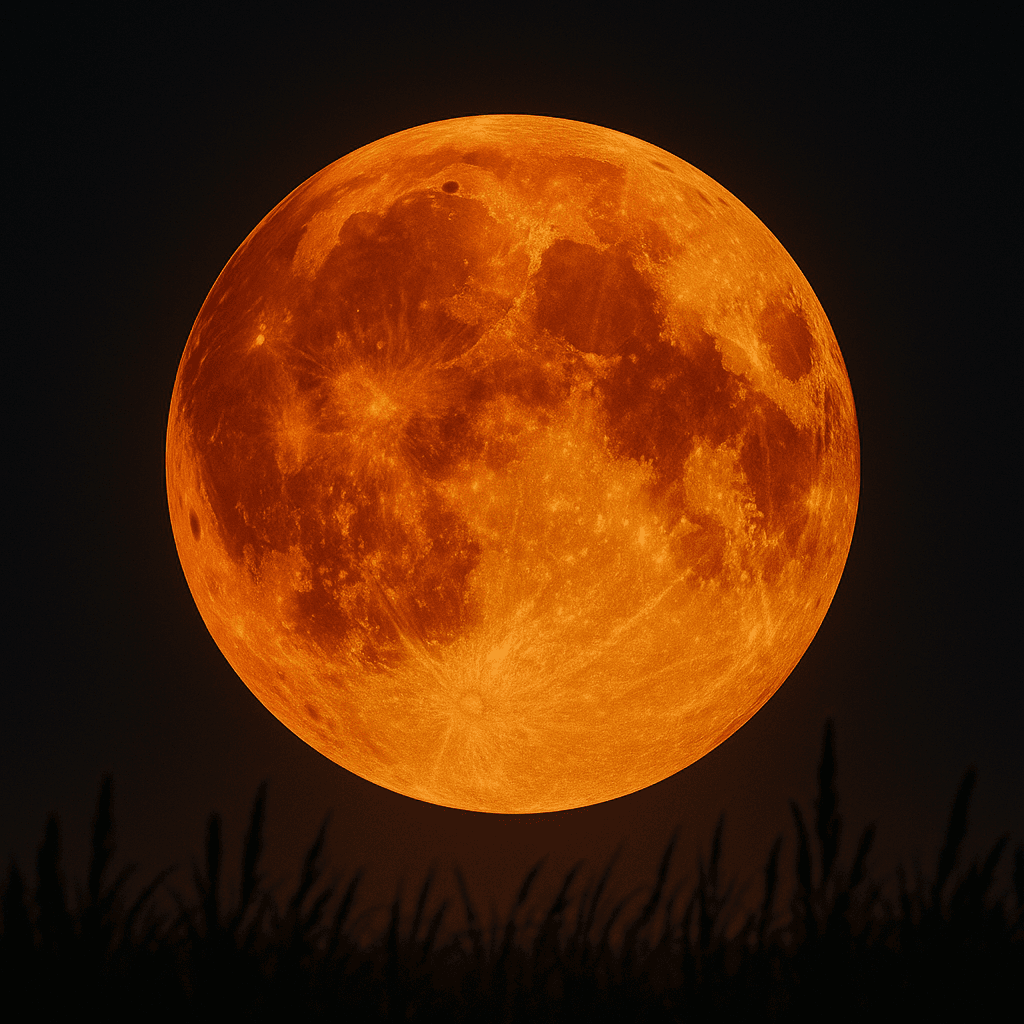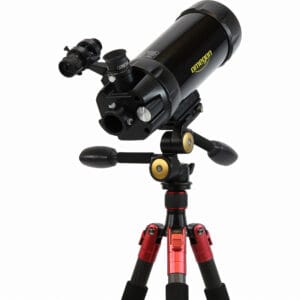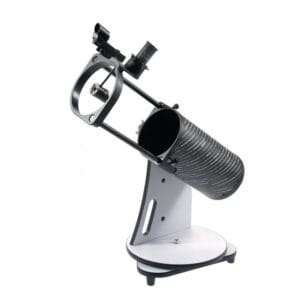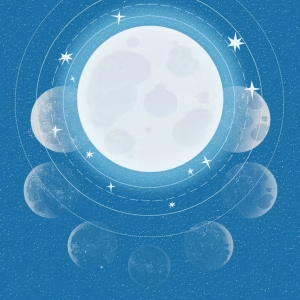The full moon September 2025 will take place on September 7 and coincides with a spectacular total lunar eclipse. This means that the moon disappears completely into the Earth's shadow, giving it a deep red color often a blood moon named. The high point is around 8:10 p.m. Dutch time, right when the moon is in the constellation Aquarius. For anyone with binoculars or telescopes (or just your eyes...), this promises to be an evening you won't soon forget.

When is the full moon September 2025?
The full moon of September 2025 appears on Sunday, Sept. 7 at 8:09 p.m. Dutch time. Astronomers call this moment the syzygy, when the sun, earth and moon are exactly aligned. Because the moon then passes completely through the earth's shadow, we speak of a total lunar eclipse.
The eclipse lasts a total of about three hours, of which the totality (the moment the moon turns completely red) about 82 minutes lasts. That makes this edition extra special. According to NASA globally, it is one of the most notable lunar eclipses of 2025.
Why is the full moon September 2025 called the Corn Moon?
Each full moon has a traditional name. The Corn Moon refers to the period when grain and corn used to be harvested. Farmers used the bright light of the moon to work longer during the harvest.
Other names found in different cultures include the Harvest Moon or Fruit Moon. The special thing is that this moon is often low on the horizon, so it can appear orange or even red. This enhances the dramatic effect of the September 7 lunar eclipse. The beauty of this full moon is that it is often low above the horizon. Then the moon appears much larger, an optical phenomenon we call the lunar illusion mention. It is not true magnification: our brain compares the moon to trees, houses or mountains, making it appear more imposing.
What is the best way to view and when to view the lunar eclipse?
The full moon September 2025 takes place at Sunday, September 7 and is extra special this year: it coincides with a total lunar eclipse. This full moon is also called the Corn Moon called, a name that goes back to the harvest time in September. Where the moon is normally bright and white in the sky, this time it will slowly turn dark red, a so-called blood moon. For star lovers in the Netherlands, Belgium and a number of other countries in Europe, it will be an evening not to be missed.
If you want to fully experience this extraordinary phenomenon, you can of course look with the naked eye. Yet a telescope or binoculars you have a totally different experience:
- For visual observation is a Omegon refractor with moon filter an excellent choice. Thanks to the high contrast, you can see the craters and plains on the moon razor sharp, even during the eclipse when the light gets weaker.
- For those who also wants to take pictures Is a smart telescope like the Seestar S30 ideal. It tracks the moon automatically and captures images directly via your smartphone, without the need for complicated settings. This way you capture the blood moon in all its colors and can even create a timelapse!
What time will the lunar eclipse begin September 2025?
Many people wonder: what time exactly does the lunar eclipse begin? These are the main stages in Dutch time:
- Beginning partial eclipse: 7:12 p.m.: Earth slides partially in front of the moon, a bite seems to have been taken out.
- Beginning totality: 8:10 p.m.: the moon disappears completely into the Earth's core shadow.
- Maximum eclipse: 8:51 p.m.: the moon is deep red, this is the photogenic highlight.
- End totality: 9:32 p.m.: the moon slowly slides out of the shadows.
- End of partial eclipse: 10:30 p.m.: The moon is again fully visible and bright.
In total, the eclipse lasts more than three hours, of which more than 82 minutes completely red. What is special about this type of eclipse is that the color can range from bright orange to almost black-red, depending on the brightness of Earth's atmosphere.
What do you see during the eclipse?
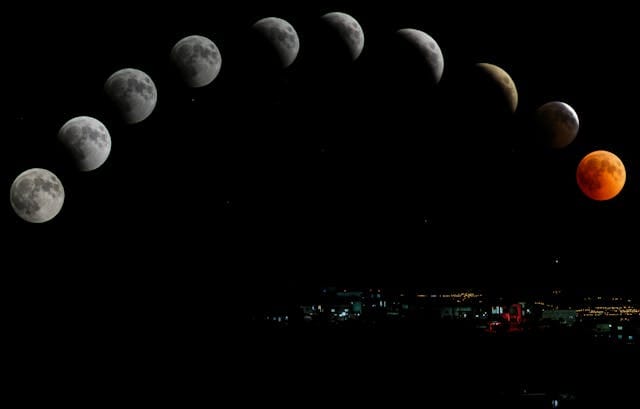
With the naked eye, you see the moon slowly change from bright white to deep red. At dusk, this is already impressive, but with binoculars or a telescope, it becomes a real experience.
- With a binoculars notice that the color is not uniform: some craters and plains become darker than others.
- With a small telescope from 70 to 100 mm you see the earth's shadow slowly sliding over the moon. This makes the cosmic dance between earth, sun and moon very tangible.
- With a larger Dobson or a Maksutov-telescope you can see even more contrast in the maria (the dark plains) and the edges of craters.
Want to keep it simple and still take pictures? Then a smart telescope such as the Seestar S50 an excellent choice. It tracks the moon automatically and takes pictures directly via your smartphone. You don't need to be an experienced astrophotographer to still get great results.
Facts and facts about the moon
The lunar eclipse is a great opportunity to learn a little more about the moon itself.
- The moon is on average 384,400 kilometers from Earth, but during this full moon it is about 373,800 km, so slightly closer.
- The moon's gravity causes ebb and flow. During the full moon, those tides are often extra strong, a phenomenon that spring tide hot.
- The moon has no light of its own. What we see is sunlight reflected off its gray, dusty surface.
- Because the moon always turns the same side toward the earth, we never see the reverse side with the naked eye. Only since space travel have we known about the so-called backside of the moon.
Facts like this make a lunar eclipse even more impressive: you realize you are looking at a world that has accompanied our planet for billions of years.
The night sky around Sept. 7
The moon is in the constellation Aquarius during this eclipse. The bright moonlight may overcast many stars, but there is still plenty to see.
- Saturn Is close to the moon. With a telescope you can see its rings beautifully, highly recommended during this night.
- Jupiter comes close to the moon later in September. With a 10 mm eyepiece, you can see even the four largest moons as tiny dots next to the planet.
- In the early morning also Venus visible as bright morning star.
So those who want more than just the moon can catch a complete planetary show. A planetary eyepiece or moon filter helps to see the details even better.
👉 Discover our collection moon filters And view the Corn Moon without being blinded.
Tips for watching and photographing
You can follow a lunar eclipse anywhere you have a clear view of the eastern horizon. Some tips:
- Find a dark spot outside the city for the best experience.
- Let your eyes get used to the dark for 15 minutes.
- Use a tripod when taking pictures. Even a smartphone on a tripod gives surprisingly good images.
- Experiment with exposure: during the red phase, you can expose longer without overexposing the moon.
Don't have a telescope yet, but want to capture this phenomenon in a special way? Then consider a entry-levelDobson For visual perception or a smart telescope for photography. With these, you will take pictures not only of the moon, but also of star clusters and nebulae once the eclipse is over.
Why does the moon turn red?
During the eclipse, no direct sunlight falls on the moon. Yet light still reaches the surface: sunlight bending through the Earth's atmosphere. In the process, blue colors are filtered out and mostly red light remains. The result is a blood moon.
Interesting detail: the hue of the moon tells us something about the brightness of the Earth's atmosphere. When there is a lot of dust or clouds in the sky, the moon becomes darker red or even brown.
An evening for everyone
The full moon September 2025 is a celestial phenomenon that anyone can experience. For families, it is an educational evening together outdoors. For beginners, it is an accessible way to learn about the night sky. And for astrophotographers, it's an outside opportunity to capture spectacular images.
Whether you look with the naked eye, use simple binoculars or opt for a telescope, this eclipse will stay with you.
👉 Would you like to experience this unique moment to the fullest? Check out our telescopes and accessories, and get ready for the year's most beautiful full moon.an the year's most beautiful skies.

